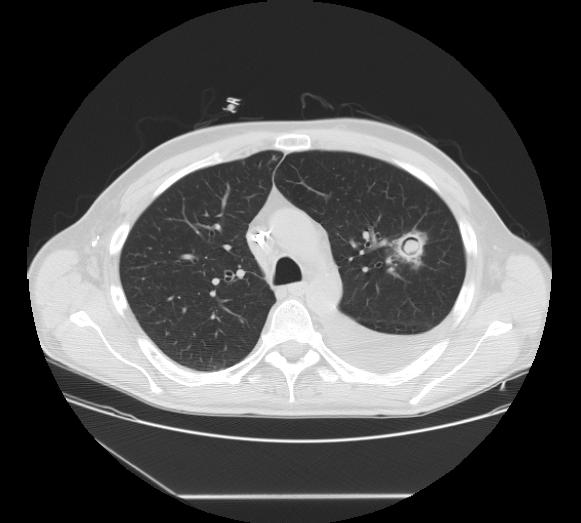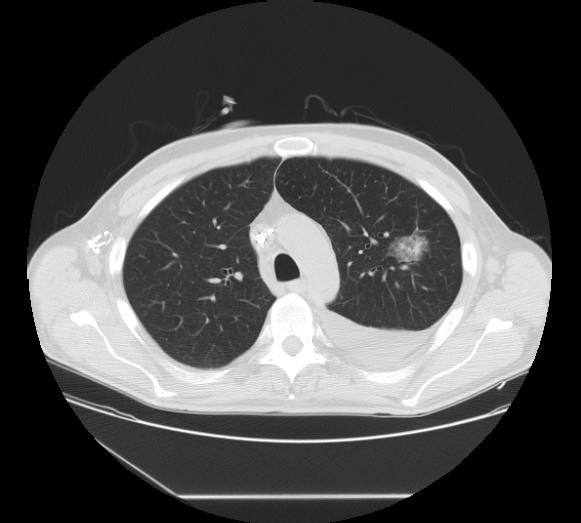Aspergilloma
|
Aspergilloma Microchapters |
|
Diagnosis |
|---|
|
Treatment |
|
Case Studies |
|
Aspergilloma On the Web |
|
American Roentgen Ray Society Images of Aspergilloma |
Editor-In-Chief: C. Michael Gibson, M.S., M.D. [1]
Etiology
The most common place affected by aspergillomas is the lung. Aspergillus fumigatus, the most common species, is typically inhaled as small (2 to 3 micrometer) spores which do not affect people without underlying lung or immune system disease. However, people who have pre-existing lung problems, especially the cavities typically caused by tuberculosis, are at risk for developing aspergillomas. The fungus settles in a cavity and is able to grow free from interference because the immune system is unable to penetrate into the cavity. As the fungus multiplies, it forms a ball which incorporates dead tissue from the surrounding lung, mucus, and other debris.
Clinical syndrome
Typically, individuals who are affected by aspergillomas do not have symptoms related to the infestation. People often co-exist for decades with aspergillomas prior to incidental diagnosis, typically by x-ray or computed tomography. However, a small percentage of aspergillomas invade into the wall of the cavity and can result in bleeding. Thus, the most common symptom of aspergillomas is coughing up blood (hemoptysis). Although this can occasionally be life-threatening, the amount of blood produced is usually inconsequential.
Aspergillomas can form in other body cavities. Aspergillus can form abscesses in the brain, usually in people who are immunocompromised. They can also form within the different sinuses in the face, within the kidneys and urinary system, the ear canal, and on the heart valves.
Diagnosis
The imaging findings are
- Intracavitary mass
- Usually in upper lobes
- Air may surround aspergilloma (Monod sign). This is not to be confused with the Air crescent sign seen with invasive apergillosis
- Moves with changing positions
- Adjacent pleural thickening is common
Treatment
Most cases of aspergilloma do not require treatment. Treatment of diseases which increase the risk of aspergilloma, such as tuberculosis, may help prevent their formation. In cases complicated by severe hemoptysis, surgery may be required to remove the aspergilloma and stop the bleeding. There has been interest in treatment with anti-fungal medications such as itraconazole, but as of 2005, none has been shown to eradicate aspergillomas.
References
- Soubani AO, Chandrasekar PH. The clinical spectrum of pulmonary aspergillosis. Chest. 2002 Jun;121(6):1988-99. Review. PMID 12065367


